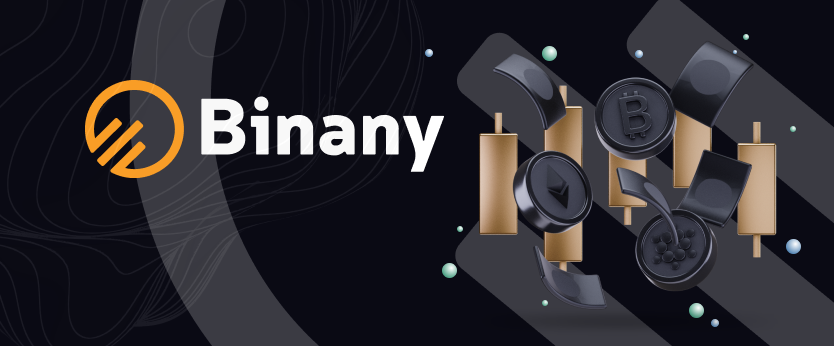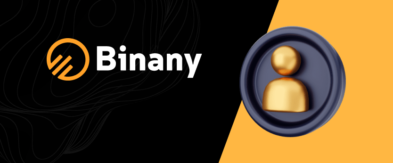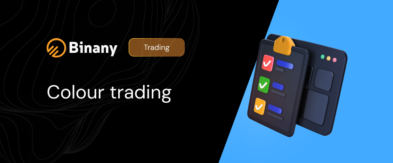Money Trading and Currency Trading India: Win from Currency Motions
Currency trading, likewise known as forex or foreign exchange trading, is the largest financial market in the world. Its daily trading volume exceeds $7 trillion. This dynamic market proposes partakers the opportunity to trade currencies against one another, striving to profit from fluctuations in exchange rates.

In recent years, online platforms like Binany have made money trading more approachable. They provide individuals with handy interfaces, educational instruments, and innovative features to figure out this global marketplace. Thanks to platforms like these, even those with minimal trading experience can set about trading in currency with confidence.

It does not matter if you are a proficient investor or a newcomer investigating financial markets. Currency trade in India ensures liquidity, flexibility, and accessibility. Let’s have a glance at the currency trading basics, involving how it functions, its benefits, and how to get started successfully.
Key takeaways:
- Despite the currency trading market being vast, eight main currencies are liable for almost 80% of the volume.
- Currency prices swing depending on the economic situation of the nations involved, geopolitical dangers and instability, financial flows, and other aspects.
- Trades are performed 24 hours, five days a week on Forex exchanges. This constitutes the most extensive and liquid asset market in the globe.
- Currencies are traded against each other in the form of pairs, for instance, INR/JPY. Every pair is ordinarily quoted in pips out to four decimal places.
What Does the Currency Market Imply?
The currency market trading represents a single market where partakers working in miscellaneous jurisdictions from all corners of the globe can purchase and vend diverse currencies. It is likewise titled the foreign exchange market.
The market is of utmost significance in carrying out international trade and the financial sphere. Generally speaking, the global currency market functions on several levels, in particular, the interbank market and over-the-counter market.
The interbank market stands for the part of the currency market that has some of the most gigantic banks in the globe as central players. This is where these banks swap currencies with each other and carry out extensive trades among themselves.
The over-the-counter market represents the part of the currency market where companies and individuals possess the possibility to trade in currencies. With the assistance of a broker and an online trading platform, everybody can partake in currency trading.
Functionality of the Currency Market
The currency market has several functions. One of its obvious objectives is to move money (or foreign currencies) from one country to another to enable payment-making. A currency can be swapped for another on the market.
In addition, the currency market proposes a method for individuals who purchase items from other nations to attain a temporary loan. This makes it effortless for products and services to move between miscellaneous nations. When a person purchases items from abroad, they can employ their own borrowed funds to pay for them.
Finally, another function of the currency trading market is to hedge the currency risk. It signifies a shield against dangers linked with swings in the foreign exchange rate. Within the framework of this function, shoppers and sellers agree to vend and purchase items in the future at some generally accepted exchange rate.
Major Kinds of Currency Market
Nowadays, one distinguishes four main kinds of the currency market. For instance, spot markets ensure the speedy performance of transactions. They likewise provide shoppers and sellers with instantaneous payment at the current exchange rate. Almost one-third of all currency exchanges and trades happen in the spot market.
Another kind of currency market trading is the forward market. One distinguishes several parties in this market, for instance, two enterprises, two people, etc. The forward market implies an agreement to make a deal at a predetermined cost and quantity at a later time.
Future markets are a centralized marketplace where partakers can purchase and vend standardized contracts for the future delivery of a definite amount of goods, financial tools, or other assets at a predetermined cost.
As the name implies, options markets are where “options” are purchased and vended. An option stands for a contract that authorizes an investor to buy or vend a base asset, for instance, a share, index, etc., at a predetermined cost within a predetermined period of time.
What Does Currency Trading Signify?
Trading in currency stands for the procedure of purchasing one currency while vending another at the same time. It implies swapping one currency for another with the goal of attaining earnings from the alterations in exchange rates between them.
Currencies are constantly dealt with in pairs in the currency market. A currency pair comprises several currencies, for instance, the US Dollar (USD) and the Indian Rupees (INR). It is depicted as USD/INR. The initial currency in the pair (USD) is titled the base currency. Another currency (INR) is called the quote currency.

How Does Currency Trading Operate?
Currency trade operates the same way as other transactions where a person is purchasing one asset employing a currency. Regarding currency, the market cost informs a trader how much of one currency is needed to attain another. Every currency holds its own code. This authorizes traders to rapidly recognize it as part of a pair.
For the convenience of users, the currency trading functions 24 hours a day, five days a week. Nevertheless, diverse times of the day can have completely miscellaneous trading dynamics. As a rule, traders distinguish such sessions as European, American, and Asian. While sessions partially overlap, the major currencies in every market are traded most actively during their corresponding market hours.

Pairs and Pips Explained
The entire currency trading is performed in pairs. In contrast to the stock market, where a person can purchase or vend a single stock, in the foreign exchange market they can purchase one currency and vend another simultaneously. Every currency pair is quoted in terms of one currency versus another.
For instance, in the USD/EUR currency pair, USD (the U.S. dollar) stands for the base currency and EUR (the euro) is the quote currency. If a person purchases this pair, they are purchasing dollars and vending euros. Conversely, if a person vends this pair, they are vending dollars and purchasing euros.
Almost all currencies are estimated to the fourth decimal point. A pip stands for percentage in point. This is the tiniest increment of trade. As a rule, one pip equals 1/100 of 1% or the number in the fourth decimal place. The majority of currencies are evaluated to the fourth or fifth decimal place.
Currency pairs that involve the Japanese Yen (JPY) as the quote currency are exceptions to this rule. Ordinarily, these pairs are estimated to two or three decimal places. At the same time, a pip is represented by the second decimal place.
Finally, currencies are traded in miscellaneous-sized lots. A micro lot stands for 1,000 units of the base currency in a pair. If the account is in U.S. dollars, a micro lot depicts $1,000 of the base currency (the dollar). A mini lot stands for 10,000 units of the base currency. The standard lot is 100,000 units.
Retail or novice traders frequently trade currency in micro lots. The reason is that one pip in a micro lot depicts merely a 10-cent move in the price. This simplifies losses governing if a trade doesn’t deliver the expected results. One pip is equal to $1 in a mini lot. At the same time, one pip is equal to $10 in a standard lot.
Clarification of Far Fewer Products
Most of the volume in currency trading is restricted to merely eighteen currency pairs in contrast to the numerous stocks that are accessible in the global equity markets. While there are other pairs for trading aside from eighteen, the eight main currencies most frequently traded are the Canadian dollar, British pound, New Zealand dollar, Japanese yen, U.S. dollar, euro, Swiss franc, and Australian dollar. There is no doubt that trading money may be troublesome. Nevertheless, the availability of much fewer trading options makes this process and portfolio governance more effortless.
Strong Points of Currency Trading (Forex Trading)
While trading currency may seem challenging for someone, it is worth it. The reason is that Forex trading boasts a number of strong points. First of all, you can make use of currency trading volatility. Several currencies have surprisingly volatile price alterations because of the extensive number of currency trades that happen daily, which constitute billions of dollars each minute. Users can attain earnings by carrying out a prediction on price movements in any direction.
Secondly, the currency market is accessible for 24 hours and 5 days a week. These vast trading hours have become possible since currency transactions are carried out over the counter, not through a central exchange. Finally, the currency market is regarded as the most liquid in the globe since there are numerous shoppers and sellers desiring to make a deal at any point in time.
How to Set About Trading in Currencies?
Trading currencies on Binany is a breathtaking capability to capitalize on the fluctuating values of global currencies. To start, it is recommended to comprehend the basics of currency trading first. Study market fundamentals. Learn such factors as economic indicators, geopolitical occasions, and interest rate alterations.
The second step is to craft an account on Binany. Luckily, Binany proposes a handy platform for trading currencies. Visit the Binany website or download the mobile application. Press “Sign Up” and present the needed details: your email, password, currency, etc.
After successful registration, your assignment is to deposit funds to set about trading. Familiarize yourself with the key features of the platform. Browse accessible pairs like EUR/INR or USD/JPY. Analyze live charts and indicators to plan your trades.
The good news is that Binany presents a demo account for newcomers to practice trading without risking real funds. Employ it to test strategies, comprehend market trends, and obtain confidence before trading live.
Once you’re ready, switch to a live account. Pick a currency pair. Determine the amount you desire to trade. Analyze the market and place your trade based on your strategy. When you achieve your profit objectives, withdraw funds to your linked payment method.

Trading Hours for Currency Trading in India
The currency market is accessible 24 hours a day, 5 days a week for Indian partakers. During the time of operation of the Reserve Bank of India, trading in currency is performed from 9:00 a.m. to 5:00 p.m. on Mondays and Fridays. Nevertheless, the currency market is global. This implies it can be traded at any time.
Final Thoughts
Studying currency trading needs to be taken seriously. Detecting the best trading strategies requires practice and time. The majority of brokers will permit partakers to open a free virtual account to trade with virtual funds until they determine strategies that will assist them in becoming prosperous traders.
In contrast to stock trading, forex exchange holds a volatile nature. It considers a set of global factors that influence currency movements and the necessity to monitor markets day and night. That’s why traders should realize these factors well and their influence on the currency to have an effective and lucrative trading portfolio.
FAQ
What is currency trading?
Trading in currency, or forex trading, implies purchasing and vending currencies in the foreign exchange market. Traders strive to profit from fluctuations in currency values. They trade pairs like USD/INR or GBP/JPY. It operates 24/7 and depends on such factors as economic data, geopolitical occasions, and interest rates.
Is $100 sufficient to start forex?
Yes, $100 can be sufficient to start forex trading. This is achievable with brokers proposing micro or nano accounts. Nevertheless, it is crucial to govern risk carefully since forex can be volatile. By starting with a small amount, you can learn the market without substantial financial risk. Make sure you employ proper risk governance strategies.
What is the work of a currency trader?
A currency trader purchases and vends currencies in the foreign exchange market to profit from alterations in exchange rates. They analyze market trends, economic data, and geopolitical occasions to make proper trading decisions. Their objective is to capitalize on price fluctuations, either in short-term or long-term trades, to attain financial gains.
How to trade currency?
To trade currency, pick a dependable forex broker, open an account, and deposit funds. Analyze currency pairs employing technical or fundamental analysis. Place trades on the basis of predictions of price movements, utilizing miscellaneous instruments for risk governance. Keep track of the market and correct your strategy accordingly for profitable trades.
Is currency trading suitable for novices?
Trading currency can be good for newcomers if approached carefully. It’s critical to start with a strong comprehension of the market, risk governance strategies, and a demo account. Nevertheless, due to its volatility, it can be risky. Novices need to educate themselves thoroughly, practice, and trade with caution to bypass substantial losses.
What moves currencies?
Currencies are influenced by multifarious factors such as economic data, interest rates, inflation, political stability, and market sentiment. Central bank policies, trade balances, and geopolitical occasions likewise play crucial roles. What’s more, investor speculation and global demand for a currency can drive its value up or down, impacting exchange rates.
What is currency trading in India?
Currency trading in India implies purchasing and vending foreign currencies on the forex market. It’s regulated by the Reserve Bank of India (RBI) and carried out through licensed banks or brokers. Traders try to profit from swings in exchange rates between the Indian Rupee (INR) and other global currencies. It demands a forex trading account.
Why is currency trading titled Forex or FX?
Currency trade is titled Forex (Foreign Exchange) or FX because it signifies the exchange of different currencies in a global marketplace. “Forex” refers to the market where currencies are traded, and “FX” is simply an abbreviation. The name underscores the exchange of foreign currencies and the global nature of the market.
Who is the inventor of currency trading?
Trading currency, or Forex trading, evolved over centuries, but its contemporary form is ordinarily credited to the establishment of the Bretton Woods system in 1944. The system crafted fixed exchange rates, leading to a transition towards free-floating currencies in the 1970s. Crucial figures in its development involve economists and financial institutions shaping the global market.
How are currency pairs quoted?
Currency pairs are quoted with two currencies: the base currency (first) and the quote currency (second). The price depicts how much of the quote currency is needed to purchase one unit of the base currency. For instance, in EUR/USD, if the quote is 1.2000, it implies 1 Euro equals 1.20 US Dollars.
How to invest in currency in India?
To invest in currency in India, you can open an account with a forex broker or employ online trading platforms. You can trade in the Indian Rupee (INR) or foreign currencies through forex markets. It’s critical to realize market risks, comprehend regulations, and utilize instruments like futures or options for currency trading.

Financial writer and market analyst with a passion for simplifying complex trading concepts. He specializes in creating educational content that empowers readers to make informed investment decisions.



